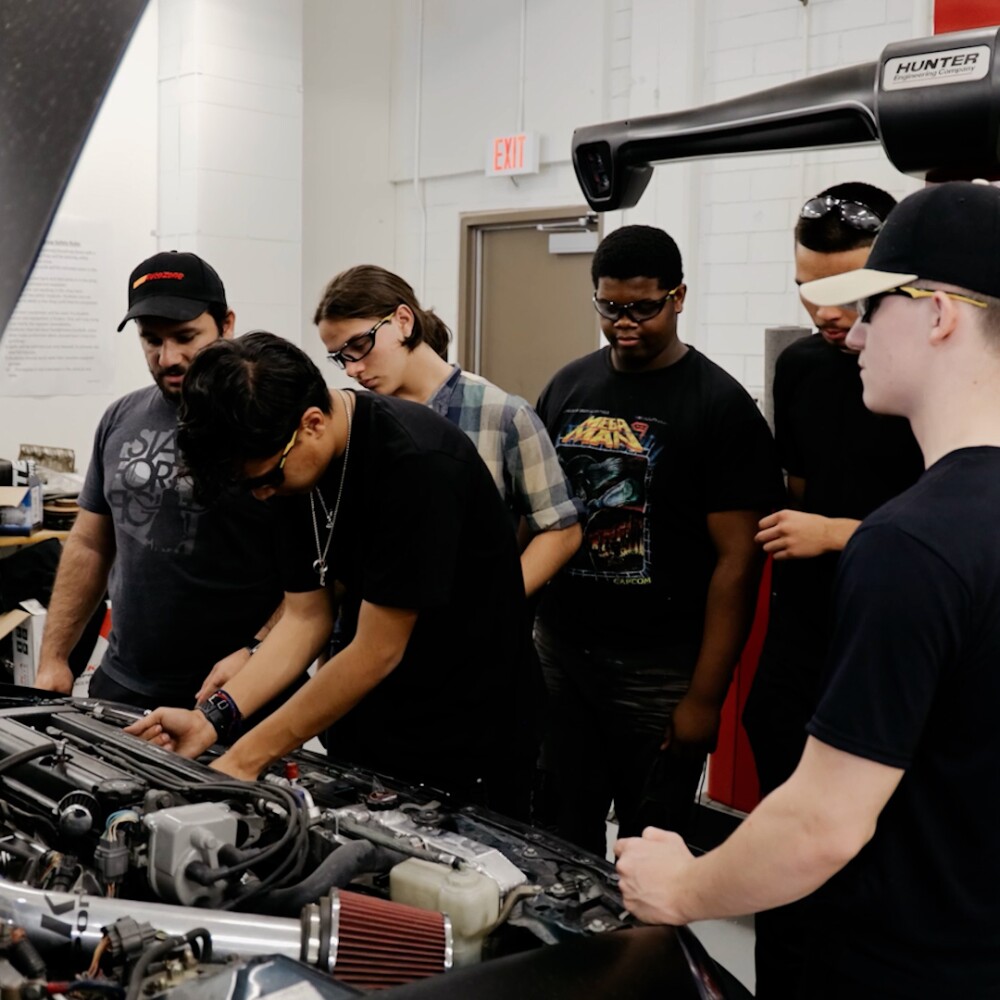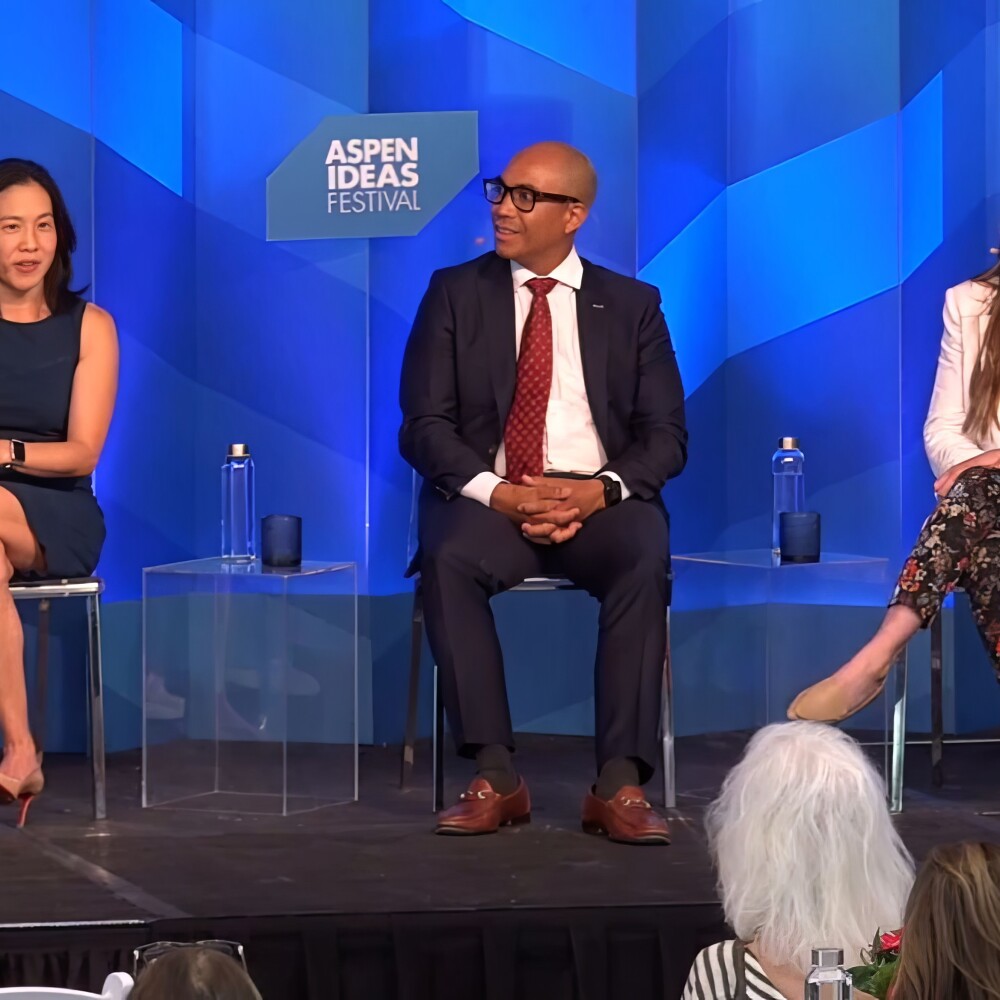Future School in Fort Smith, Arkansas, is on a mission to transform high school. Through internships, project-based learning and more, the public charter school is working to develop — and keep — local talent in this once-bustling manufacturing hub. To accommodate more students, the school has launched a significant renovation of its current space — a former Girls Inc. facility in the heart of downtown — with financing from the Facilities Investment Fund, a nonprofit lending fund supported through the Walton Family Foundation’s Building Equity Initiative. I spoke with founders Trish Flanagan and Boyd Logan about how they are securing their school’s future by providing students with a learning environment tailored to their needs.
What was the impetus to launch Future School in 2016?
Boyd: Trish and I were both teachers, and we saw kids who were super capable and really engaged in the world around them, but whose passions weren’t connecting with their schoolwork. I remember one student who used to ask to use my laptop during lunch. He was tracking FedEx shipments for exotic foods that he would then sell to restaurants. It blew my mind that his teachers were oblivious to his entrepreneurship, and that we weren’t helping him achieve greater success. It was an epiphany for me as an educator, and one that led to the launch of Future School.
Trish: School has to be more relevant, and that starts with the motivation of students. At Future School, we enable them to chase whatever inspires them to take ownership of their education. Then, we systematically break down the barriers to entry, giving students access to mentors and industries that might push them out of their comfort zone, but that also drive them to distinguish themselves in real career settings.
One of our students, Mario, is a first-generation immigrant. Through Future School, he interned with Hanna Oil and Gas for three years. By his second year, he was essentially an honorary member of the C-suite, applying his interest in actuarial science toward helping the leadership team make decisions that impacted their actual business.
Mario received a full ride to Penn, and with the network he has built in Fort Smith, it’s more likely he’ll return. We can nurture homegrown talent beginning at an earlier stage than most people think possible.
during at the school's graduation ceremony.
Who do you serve?
Boyd: Fort Smith is really diverse, with large Latinx and South Asian communities. Future School reflects this: 65% of our students are nonwhite and 73% receive free or reduced lunch. We’ve heard so many times from business leaders who are impressed by the maturity of our students. These are kids who have not been exposed to a lot of opportunity, but who are distinguishing themselves and seizing real career opportunity — not some watered down, kid-friendly version.
These relationships are as much of a benefit to the employers as to the students. We are giving our local economy access to a pool of local talent.
Tell me about your facilities. Where were you running into challenges?
Trish: When we began our search, we looked at 30-plus sites and settled on a former Girls Inc. facility that had been abandoned. We knew we wanted to be a part of the reinvigoration of our community. We chose a site of real importance to Fort Smith.
As word of our unique programming has grown, enrollment has tripled since we opened. We were lucky to obtain some modular classrooms, but we’ve reached a point where we can’t viably fit any more students into our existing setup.
Students come to Future School for the offsite opportunities — the internships and work experience. But they also deserve a learning environment befitting our name — a place where they can be proud to meet with mentors, launch their businesses and access state-of-the art technology. There can sometimes be an unfair stigma attached to ‘career education,’ and having a modern, professional space builds credibility and confidence in their decision to join us.
Boyd: In Arkansas, charter schools don’t have access to tax dollars for facility funding, so we have to spend money that would otherwise go directly to the education of students. In the finance world, lending to charter schools is seen as a pretty high-risk investment. These two realities make it really challenging to develop great charter facilities, which is why gaining access to facility loans through the Building Equity Initiative is so important.
What will this new loan from BEI’s Facilities Investment Fund allow you to accomplish?
Trish: The $4 million low-interest loan has allowed us to purchase our existing facility and build an 18,400 square foot addition, meaning we can ditch the modular classrooms while expanding to serve 9th grade and increasing full enrollment to 400.
Civic Builders [the fund’s operator] serves as a thought partner, helping us build out space and programming that really matches our mission. Banks don’t do that. The world of education and the world of finance are like oil and water, and Civic Builders has helped us bridge that gap. They understand what it takes to build a successful, sustainable school model. Their only motive lies in helping us build this for our community.




